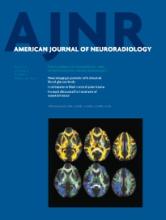Abstract
BACKGROUND AND PURPOSE: The pCONus is a new stentlike self-expanding nitinol implant with 4 distal petals, which is fully retrievable and electrolytically detachable. The distal end is implanted inside the aneurysm at the neck. The shaft is anchored in the parent vessel. In selected wide-neck bifurcation aneurysms, the pCONus was used to assist coiling. The device was evaluated for its safety and efficacy.
MATERIAL AND METHODS: Twenty-eight patients with 28 wide-neck aneurysms (9 recently ruptured) were treated with pCONus-assisted coiling at the discretion of the operator. Other treatment options were considered but were discarded due to anticipated difficulties. Technical issues, immediate posttreatment angiographic findings, clinical outcome, and follow-up imaging were assessed.
RESULTS: There were 11 MCA, 7 anterior communicating artery, 1 posterior cerebral artery, 1 A2, and 8 basilar artery aneurysms. Insertion and deployment of the pCONus and subsequent coiling were possible in all cases. There were no clinically evident complications associated with the use of the device. Initial anatomic outcome showed 8 complete occlusions, 9 neck remnants, and 11 incomplete occlusions. Neurologic status remained unchanged at follow-up. Angiographic controls were obtained in 22 patients (mean, 7.5 months). Of these, 13 had complete occlusion, 9 showed improvement, and 7 were unchanged. Four died from SAH sequelae or other diseases, and 2 have not yet undergone follow-up. No intimal hyperplasia was observed.
CONCLUSIONS: The pCONus facilitates coil occlusion of unruptured and ruptured wide-neck bifurcation aneurysms. The device can be deployed safely. Coil retention is sufficient to protect the efferent vessels. So far, no intimal hyperplasia in the shaft has been observed.
ABBREVIATIONS:
- PCA
- posterior cerebral artery
- SCA
- superior cerebellar artery
- WNBA
- wide-neck bifurcation aneurysm
- © 2014 by American Journal of Neuroradiology
Indicates open access to non-subscribers at www.ajnr.org












